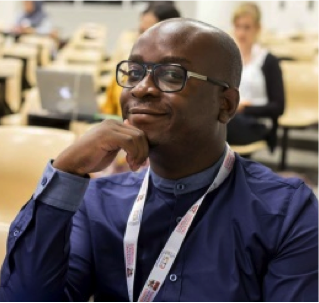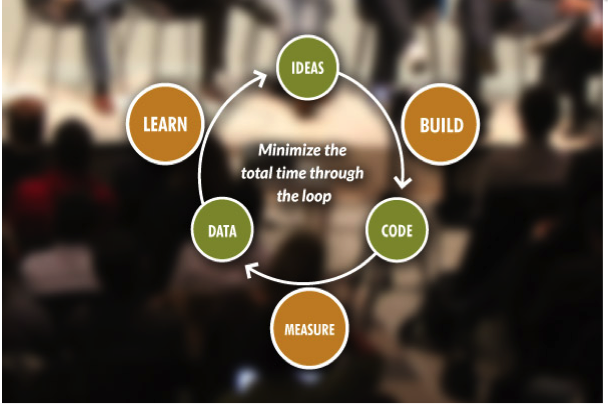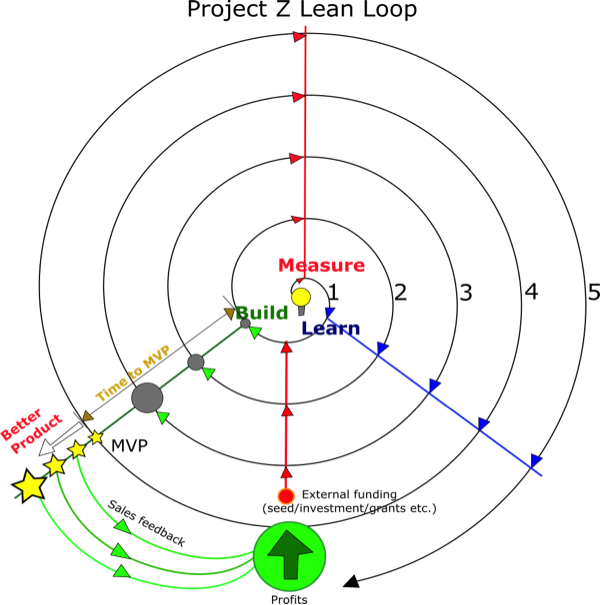 In 2013, the Shona E-Reader project, now known as MyNatiV, received a FIRE Africa Grant for its innovative text-to-Speech (TTS) E-learning application implemented on a low cost Android tablet to enable children in rural Zimbabwe to learn to read using their own languages. Since then, the project has gone from strength to strength and, in May 2016, the project was awarded a World Summit on the Information Society (WSIS) Champions Certificate for its efforts in advancing education in rural areas. Here, in part 1 of an 3 part series, project leader Ian Mutamiri writes about how you can use Lean Methodology to build strong foundations for your ideas until they become a minimum viable product (MVP).
In 2013, the Shona E-Reader project, now known as MyNatiV, received a FIRE Africa Grant for its innovative text-to-Speech (TTS) E-learning application implemented on a low cost Android tablet to enable children in rural Zimbabwe to learn to read using their own languages. Since then, the project has gone from strength to strength and, in May 2016, the project was awarded a World Summit on the Information Society (WSIS) Champions Certificate for its efforts in advancing education in rural areas. Here, in part 1 of an 3 part series, project leader Ian Mutamiri writes about how you can use Lean Methodology to build strong foundations for your ideas until they become a minimum viable product (MVP).
Introduction
The Fund for Internet Research and Development – FIRE Africa – is one of Africa’s leading Grants and Awards programmes and is designed to encourage, support and develop innovative ICT solutions to Africa’s education, information, infrastructure and communication needs. FIRE Africa identifies projects that use ICT to bring innovative ideas to life and empowers project leaders with priceless knowledge on sustainability and funding. An interesting overview of the program is available here. The 2016 Grant round is still open for applications. There is over US$ 240,0000 of funding for eligible projects and you have a few days left to apply (deadline 31 May). In this article I talk about how you can use Lean Methodologies to create strong foundations to build your ideas on until they become a sustainable MVP.
Many African challenges have been solved through the use of engineering. A lot of Africa’s current problems require creative thinking on the part of the problem solvers – and engineers play an important part in problem-solving teams. From Malaria detection in early stages, to real-time information systems used in disaster-stricken areas, engineers have found great ways to use of their knowledge and training for the benefit of others.
Design Thinking is a process which includes the "building up" of ideas, with few, or no, limits on breadth during a "brainstorming" phase (Robson, 2002) which encourages input and participation. One version of the process has seven stages:
- Define
- Research
- Ideate
- Prototype
- Choose
- Implement
- Learn (Simon, 1969).
The steps are not linear, can occur simultaneously and can be repeated. There are also different versions given by Christoph Meinel and Larry Leifer. The most important elements of Design Thinking are creativity, teamwork, empathy, curiosity and optimism. Creativity inspires novelty, teamwork fuels productivity and empathy enables one to get in touch with and understand the target audience that the solution is meant for, which helps in design. Curiosity fuels the need to ask questions that help understand both the solution and the challenge. And finally, optimism channels the much needed energy to get to a working MVP. Lean philosophy carries Design Thinking into business. It was first proposed by Eric Ries in 2011 and the philosophy is widely applied in new-age business start-ups. The premise of this blog post is that it is very relevant for the African business landscape too, and especially relevant for entrepreneurs, project leaders and startup founders.
Lean Startup Methodology

Figure 1: The Lean Startup Process. Source: http://theleanstartup.com/principles
The Lean Startup Methodology provides a scientific approach to creating and managing startups and to getting a desired product to customers' hands faster (Ries). The process involves three repetitive steps:
- Measure: This process is where one measures how customers respond.
- Learn: One learns whether to pivot or persevere.
- Build: One uses what they learned from the measurements to build a product or solution.
Lean Startup greatly reduces risk for any startup venture and is even being applied to social entrepreneurship, life sciences, and innovations in STEM education (UMD.edu). It favours experimentation over elaborate planning, customer feedback over intuition, and iterative design over traditional “big design up front” development (Blank, 2013).
The authors propose that lean startup can be applied to engineering innovations that can be commercialised, especially in poor or developing countries. In his book “The Bottom Billion”, Paul Collier explores why poorer countries fail to progress despite international aid and support. One solution he suggests is that aid agencies should increasingly be concentrated in the most difficult environments and accept more risk (Collier, 2007). The authors propose that society can, in turn, meet this suggestion halfway by implementing methods that reduce that risk, and that the lean startup process is suitable method for this.
Lean startup for Independent (and Profitable) Sustainability
The illustration below (Figure 2) is for an example project, project “Z”, and shows the lean startup process loops 1 to 5. Project Z uses lean startup as a model for research and business. It starts off as an idea (loop 1) that is measured to understand target audience response and to learn more about both product and customer, then eventually build something to start with.
At this point, the “build” could just be a design on paper that is not yet manufactured. Just before every build stage, external funding may be absorbed and utilised in the first build stage and in future measuring, learning and building stages. Lean startup encourages the project team to repeat the process of measuring, learning and building.
In each loop, time is minimised as much as possible, and as many hypotheses about the project as possible are validated. In other words, the team learns more about their product from feedback coming from the target audience as well as through experimentation and the risk of releasing a bad product is eliminated. The target audience also learns more about the benefits of having the product as they are made aware of its functions and capabilities.
The risk of releasing a product too early (for example when people are not yet fully aware of its benefits) are also eliminated. The amount of time needed to get to an MVP (in this case, a functional product whose value propositions’ benefits are fully understood by the target audience) is shortened due to frequent interaction with the target audience and attending to all feedback, good and bad.
The third loop shows an instance whereby external funding is stopped, and that is a stage before the MVP is achieved. The assumption is that the team has successfully created a functional product and that money has been spent well and precisely on what it was meant to be spent on due to the staggered nature of how the funds are injected into the process.
Another assumption is that the MVP can be released commercially to the target market and start making money for the project, which can be channelled back into the project to handle production and other costs. Equilibrium, or break-even, may take some time to achieve, but the repetitive processes of measuring, learning and building must continue in an effort to create a better product, and releases done for better products.

Figure 2: Project ‘Z’ Lean Loop (or spiral)
FIRE Africa Programme - Training
The FIRE Africa programme occasionally invites Grantees and Awardees (and occasionally potential Grantees and Awardees) to attend short and intense courses, and it is important that you prepare your mind to absorb everything and make the most of the training, especially when you have experimented and you have questions. If you are selected to be offered training or mentoring under the FIRE Africa program for your project, think about how (or if) Lean Methodology can help you build a strong foundation especially before you attend the FIRE Africa training. Understanding the need to employ a methodical approach to bringing your idea to life is important, and in my opinion, Lean is perfect for Africa: low risk, low investment – and will always find its way into how you work through your project.
Do you think Lean is practical for Africa? Comment below
Ian, 23 May, Harare, Zimbabwe
Ian is an engineering consultant (ICT/Software/Telecommunications) in the tech innovation space. He is based in Zimbabwe. He is a 2013 FIRE Grantee and has received several awards and nominations for his work in culture (language) preservation using ICT. In his spare time, he produces music. You can contact him on ian (at) mynativ.com. The FIRE Africa Programme is designed to encourage, support and develop innovative ICT solutions to Africa’s education, information, infrastructure and communication needs.





